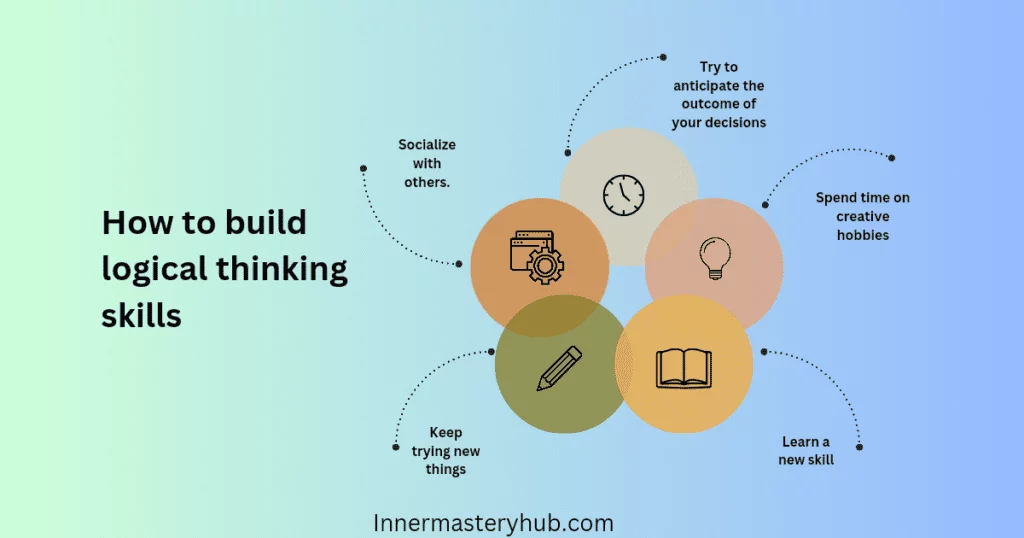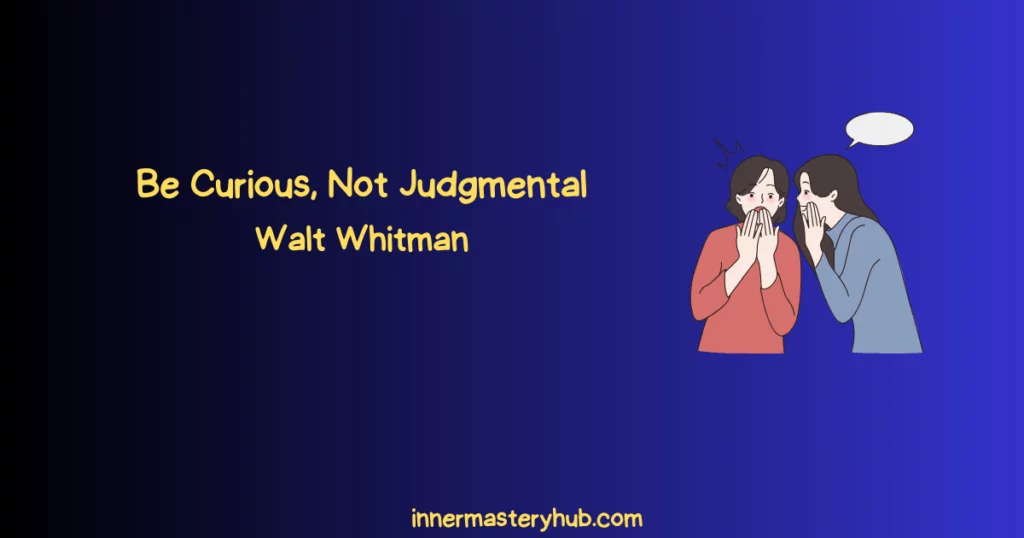
Welcome to our series on developing Critical Thinking skills, where we delve deep into the art of reasoning and argumentation. This week, we focus on the essential role of logic in studying arguments. Logic, the science of reasoning, proof, thinking, or inference, illuminates the principles that guide sound reasoning and scholarly debate.
By exploring this fascinating discipline, we aim to cultivate a deeper understanding of useful argument structures, aiding us in distinguishing compelling arguments from fallacious ones. Stay tuned as we embark on this enlightening journey into logic.
Table of Contents
2 An argument is something a person makes
An argument is a construction made by a person, often consisting of reasons or evidence to support a particular point of view. These reasons serve to persuade others of a specific claim, justify a position, or test the validity of a claim.
The strength of an argument largely depends on the logic, coherence, and relevance of these reasons and how effectively they are integrated to build the case. By mastering the principles of logic and argument analysis, one can become proficient in crafting compelling, persuasive arguments and discerning the quality and reliability of arguments made by others.
Good arguments comprise reasons or evidence to substantiate a point, whether constructed, invented, or borrowed. The purpose of these arguments is multifaceted. They might be used to persuade someone to accept a claim, justify a stance, or test the validity of a claim through examples.
An argument is not just a simple assertion; it carries an inherent purpose that drives the argument forward. This correlation between reasons and claims, wrapped in the purpose of persuasion, justification, or testing, forms the backbone of any compelling good argument.
III. Representing Arguments
An essential step in understanding and evaluating a valid argument is its representation. This process involves identifying and using complex arguments by clearly laying out the argument’s structure, focusing on the connections between various elements.
Take, for example, the first statement of the argument:
“All humans are mortal.
Socrates is a human.
Therefore, Socrates is mortal.”
The first two statements in this argument are premises, foundational components that support the argument. The final statement, “Socrates is mortal,” is the conclusion inferred from the premises.
To represent this argument, we could denote it in the following way:
- All humans are mortal. (Premise)
- Socrates is a human. (Premise)
- Therefore, Socrates is mortal. (Conclusion)
By breaking down the original argument into its constituent parts, we can see clearly how the argument’s conclusion logically follows from its premises. This representation makes evaluating the original argument’s logic and coherence easier. Understanding this process of representing arguments also provides a powerful tool for developing our arguments and critically assessing those we encounter.
2 Critical thinking about things other than arguments
While arguments are a central focus of critical thinking skills, the principles of this disciplined thinking extend beyond argumentation. They can be applied to various aspects of intellectual and personal life, helping us make sense of the complex world around us.
One such application is in decision-making processes. Critical thinking skills aid in examining our decisions, ensuring they are informed, rational, and free from bias or undue influence. By systematically analyzing the options, considering the consequences, and evaluating the suitability of each choice, we can make decisions that align better with our goals and values.
Another area where critical thinking skills prove invaluable is problem-solving. Essential thinking skills can guide us in facing a personal dilemma, a professional challenge, or a societal issue. It encourages us to define the problem clearly, gather and scrutinize relevant information, generate potential solutions, and test them for viability.
Critical thinking skills enhance our comprehension and appreciation of various forms of communication, such as literature, art, and media. We can critically analyze a novel’s themes, assess a film’s messages, or evaluate a news report’s agenda. This deepens our understanding and fosters a more mindful and active engagement with these mediums.
Critical thinking skills extend far beyond dissecting arguments. It equips us with a comprehensive toolkit for navigating various intellectual endeavors, making informed decisions, solving problems effectively, and engaging more deeply with our world.
Critical thinking is key in determining government policy, especially in conservative government thought when parliament passes laws to resolve a country’s financial crisis cost. Making judgments based on a reasoned analysis of complicated situations and evaluating the available data are all made possible by policymakers’ use of critical thinking skills.
Evaluating Arguments
The evaluation of arguments is a crucial aspect of critical thinking. This process allows us to carefully analyze and assess an argument’s strength, validity, and soundness, enhancing our ability to discern between well-reasoned, compelling arguments and those that are flawed or misleading.
The first step in evaluating an argument is to ensure it is logically consistent. We need to check whether the argument’s premises and the conclusion indicators, if true, would lead to the stated conclusion. The argument is invalid if the conclusion indicator does not logically follow the premises.
We should consider the truth of the argument’s premises. Even if an argument is logically valid, it cannot be sound if its premises are false.
For example, consider the following argument below, “
All dogs can fly. Rover is a dog.
Therefore, Rover can fly.”
While this argument is logically valid but not sound, the premise “All dogs can fly” is false. By examining the truthfulness of the premises of such arguments, we can determine the reliability and accuracy of the argument.
Lastly, we need to assess the relevance and sufficiency of the argument’s premises to identify arguments. Are the premises directly related to the single statement or conclusion?
Do they provide enough evidence to substantiate it? An argument might be logically valid and have true premises, but it is not good if its premises are irrelevant or insufficient to support the conclusion. Evaluating the relevance and sufficiency of the premises to identify arguments helps us gauge the valid argument.
Let’s look at an example to demonstrate this:
“It’s raining outside.
Therefore, the movie will be good.”
Here, the premise and the conclusion are both true, but the premise is irrelevant to the decision, making the conclusion false. By examining the relationship between the premises and the conclusion, we can identify the strengths and weaknesses of the argument.
VII. Good Deductive Arguments
A good, deductively valid argument is characterized by its validity and soundness. Validity refers to the logical structure of the argument, ensuring that if the premises are true, then the conclusion must also be true. Soundness encompasses validity but also guarantees that the argument’s premises are, in fact, true.
For an invalid argument to be considered a deductively valid argument, the truth of the premises must necessarily lead to the truth of the other statements in the conclusion. For instance, consider the argument: “All humans are mortal. Socrates is a human. Therefore, Socrates is mortal.” If the premises of the invalid argument are true, the conclusion must be proper, demonstrating the argument’s validity.
Validity alone does not ensure an excellent deductive argument. The argument must also be sound. For soundness, the argument needs to be valid and have true premises. So, if we know that the “All humans are mortal” conclusion is false and “Socrates is a human” are both true, then the argument is sound because the conclusion, “Socrates is mortal,” must also be true.
In an excellent deductive argument, the
VIII. From Deductive Arguments to Inductive Arguments
Inductive arguments
Unlike deductive ones, which are not about absolute certainty but probability and likelihood. Where deductive arguments start with general principles and apply them to specific instances, inductive reasoning moves in the opposite direction. It begins with observations of specific instances and draws general conclusions from them.
For example, if we observe hundreds of swans and note that every one of them is white, we might reason inductively that all swans are white. This argument is inductive because even though the premises provide strong evidence for the conclusion, it is still possible for the conclusion to be false. There may exist a black swan that we have not observed.
Inductive arguments
While deductive arguments provide certainty, inductive arguments provide probability based on evidence. Both types of reasoning are crucial in different contexts and contribute significantly to our critical thinking skills.
IX. Inductive Arguments
Strong Inductive argument is primarily used to construct a hypothesis or theory based on observations. The fundamental principle behind inductive reasoning is predicting future outcomes based on past occurrences.
For instance, if the sun has risen every day in human history, we inductively argue that the sun will rise tomorrow. However, unlike deductive arguments, these arguments do not guarantee the truth of their conclusions but only suggest a high degree of probability.
Inspecting the quality of the observations or evidence is crucial when evaluating inductive arguments. The conclusion is more credible if the evidence is relevant and comprehensive. However, it’s important to remember the inherent limitation of inductive reasoning: even if the argument is strong, the conclusion may still be true or false due to the probabilistic nature of induction.
Inductive arguments come in various forms: prediction, inference from analogy, induction by confirmation, and statistical induction. Each form uses a single statement and a very different function and method to gather observations and draw conclusions, further broadening the scope and application of inductive reasoning.
6 Barriers to Critical Thinking Skills
Despite its importance, critical thinking is often hindered by various barriers to critical thinking. These obstacles can inhibit our ability to analyze information and make reasoned decisions thoroughly.
Bias. Bias refers to the tendency to have a one-sided view influenced by our experiences, beliefs, and values. These preconceptions can distort our thinking process, leading to biased conclusions rather than objective analyses.
Assumptions. Often, we make assumptions without proper evidence. This can limit our viewpoint and prevent us from considering all aspects of a sound argument.
Emotions. Our emotions can interfere with our thinking process; such words often cause us to make decisions based on emotional responses rather than logical reasoning.
How To Heal Emotional Triggers: 7 Easy Hacks That Will Blow Your Mind
Over-reliance on Authority. Sometimes, we accept ideas simply because an authority figure presents them. This can prevent us from independently assessing the validity of these ideas.
Lack of Relevant Information. Without complete and accurate information, we cannot make informed decisions. Thus, lack of information or misinformation can greatly impair critical thinking.
Groupthink. This happens when we conform to the opinions and viewpoints of a group to maintain harmony and avoid conflict. This can prevent us from forming independent thoughts and inhibiting critical thinking skills.
How do you overcome the hindrances of critical thinking skills?
There are several strategies that one can employ neither the ability to overcome these barriers:
- Self-awareness. Recognizing our biases, assumptions, and emotional influences is the first step toward overcoming them. This involves reflecting on our thought processes and consciously identifying potential influences that may skew our critical thinking skills.
- Open-mindedness. Being open to new ideas and perspectives allows us to consider various possibilities. This can help us to overcome biases and assumptions and to evaluate arguments more objectively.
- Critical questioning. Questioning is a fundamental aspect of critical thinking. Rather than accepting information at face value, we should ask probing questions to validate it and explore its implications.
- Seeking diverse viewpoints. Engaging with others with different perspectives can help broaden our understanding and challenge our preconceived notions.
- Fact-checking and verification. To avoid making decisions based on incomplete or inaccurate information, we should always check the accuracy of the data we use in our reasoning.
- Independent thought. While it’s essential to consider the opinions of others, we should also form our own conclusions. This involves synthesizing the available information and using our reasoning skills to draw informed conclusions.
What are the 7 principles of critical thinking skills?
The principles of critical thinking guide us in analyzing and interpreting information effectively. Here are the seven key principles of critical thinking:
- Clarity. This principle emphasizes the importance of clear communication and understanding. Defining and articulating the issues, questions, or problems you examine is crucial to avoid confusion and misunderstandings.
- Accuracy. Ensuring the information we use is accurate is essential. Incorrect data or misconceptions can lead to flawed assumptions and conclusions.
- Precision. This principle involves providing detailed, specific, and exact information. Vagueness can lead to misinterpretations and incorrect conclusions.
- Relevance: This principle underscores the need to use information directly related to the question or problem. Irrelevant information can lead to distractions and incorrect conclusions.
- Depth. Going beyond the surface level of information and examining the underlying details and complexities is vital in critical thinking skills. This helps in understanding the real issues and their implications.
- Breadth. This principle highlights the need to consider different perspectives and ideas. Considering various viewpoints can result in a more comprehensive understanding of the issue.
- Logic. Lastly, the principle of logic insists on ensuring that our reasoning is consistent and that our conclusions follow logically from our data and assumptions. The illogical rationale can lead to incorrect conclusions.
How do you find an argument in critical thinking skills?
Identifying an argument is the first step toward an argument analysis; evaluating many such arguments is part of learning critical thinking skills. An argument typically consists of a set of premises leading to a conclusion. The premises provide reasons or evidence that support the decision. To find an argument, one must:
- Identify the Conclusion. Look for the main point or the claim the author is trying to make. This is usually presented as a statement of fact, opinion, or belief. Indicator words such as “therefore,” “so,” “as a result,” or “hence” often signal the conclusion.
- Determine the Premises. These are the reasons or evidence given to support the conclusion. They can be factual statements, observed phenomena, or expert opinions. Look for indicator words such as “since,” “because,” “for,” or “given that” to identify the premises.
- Assess the Linkage. Examine how the premises support the conclusion. The relationship should be logical and coherent, without leaps in reasoning, fallacies, or unverified assumptions.
Q. 1 Why is stereotyping a hindrance to critical thinking skills?
Stereotyping impedes critical thinking because it ignores individual variations and intricacies in favor of generalizations and preconceptions about a group of people. Stereotypes lead to skewed perceptions and conclusions,
which inhibit impartial information analysis and evaluation.
Stereotyping inhibits open-mindedness, fair reasoning, and readiness to challenge preconceived assumptions necessary for critical thinking. Individuals can participate in more serious and logical thought processes by letting go of preconceptions.
Q.2 What is an example of a critical argument?
In the debate on climate change, a critical thinker examines the impact of human activities on global warming. They gather information from reliable sources, acknowledge counterarguments, and refute them with scientific consensus.
Based on the data, it is concluded that human activities significantly contribute to climate change. This argument exemplifies the principles of critical thinking, including clarity, accuracy, relevance, depth, breadth, and logic.
Q.3 What is the relationship between developing critical thinking skills and problem-solving?
Critical thinking and problem-solving are intimately connected, often functioning hand-in-hand in our cognitive processes. However, they each have distinct roles.
Critical thinking is a rigorous process of actively and skillfully conceptualizing, applying, analyzing, synthesizing, and evaluating information gathered from observation, experience, or communication. It is about questioning and challenging assumptions and thinking critically, scrutinizing assertions, facts, and beliefs.
On the other hand, problem-solving is the application of this critical thinking to real-world problems. Once a problem has been identified and understood through critical analysis, problem-solving involves the generation, evaluation, and execution of solutions.
Q.4 What comes first, critical thinking or problem-solving?
While both critical thinking and problem-solving are interrelated, critical thinking often comes before problem-solving. Critical thinking involves analyzing and evaluating information, identifying biases and assumptions, and understanding various perspectives. It is the process of meticulously examining an issue to understand its root causes and implications.
Once this understanding is established, problem-solving comes into play. Problem-solving involves formulating strategies to address the issue identified through critical thinking. It requires making decisions, implementing solutions, and evaluating their effectiveness. Thus, critical thinking can be seen as the precursor to practical problem-solving in cognitive operations.
Q.5 What are the components of an argument in critical thinking skills?
An argument in critical thinking consists of key components: the claim or conclusion, premises, assumptions, rebuttal or counterargument, and warrant or linkage. The claim is the main point, supported by premises and underlying assumptions.
A strong argument addresses potential counterarguments and ensures logical coherence. Understanding these components is crucial for constructing and evaluating arguments in critical thinking.






